
It was not a good start to my second day touring the island of São Miguel in the Azores. A stubborn mist hung above the mountain road that took us to the northern tip of the island. Our guide, Carlos, had joked that in one day the island could experience four seasons. What he did not tell us that this would be part of our tour today. We started in autumn. When we stopped at the first view point where, in theory, we should be able to see both the north and south coastlines we could only just make out one coastline below us. It did add an ethereal element to our images.
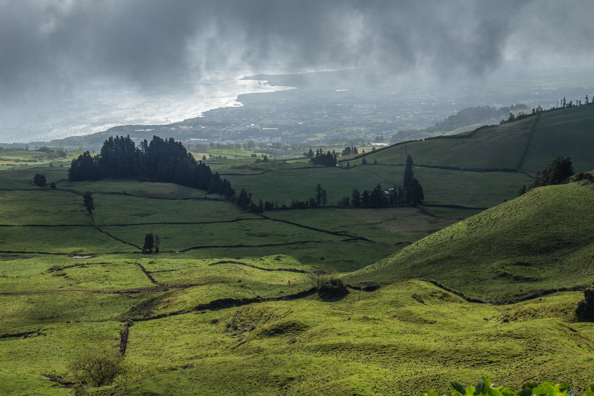
A second viewpoint was above Lagoa das Sete Cidades one of the Seven Natural Wonders of Portugal. There appear to be two lakes in the crater of an extinct volcano and the lake is also known as the Twin Lakes. By the time I arrive there it was spring. The mist had cleared and clouds scudded across a clearing sky casting shadows in the green water of one lake and blue water of the other. According to legend these lakes were formed from the tears of a green-eyed shepherd and a blue-eyed princess whose great love was not allowed to flourish. Of course, these lakes were formed when the crater of a volcano filled with water but the Azoreans love their legends. The panorama below me was stunning. I was standing at the Vista do Rei (the King’s View). It was given this name to celebrate a visit to the island by King Carlos and Queen Amélia in 1901.
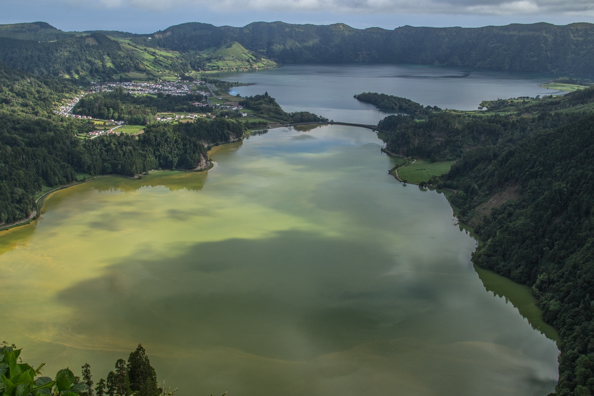
As well as two lakes the massive crater of Sete Cidades, more than three miles across, is also home to the village of Sete Cidades. The focal point of this settlement is the little church, Igreja de S. Nicolau. This church, built in the mid-nineteenth century, was a private project and maintained by the family that built it. One hundred years later, when the family no longer wished to preserve the church, it was donated to the people. When Sete Cidades was granted parish status this church became the parish church.
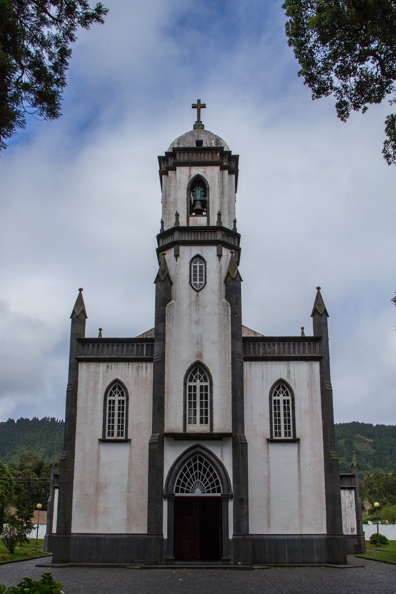
On the next stage of our journey we passed some sea stacks, pillars of stone in the sea that had been eroded and separated from the cliffs which they had originally been a part off. At another view point we found a large, abandoned hotel. Although it would appear to be situated in the ideal place to enjoy the dramatic scenery of the Azores clearly it had not been a successful venture. I had already noticed that hydrangea bushes in abundance on the island. The most common colour is blue but it can change colour and on some bushes I saw blooms of different colours. In some places they are used as hedges. Lines of these shrubs marched towards the sea in the fields below me. The plants used for this purpose are not the common hydrangea but the hydrangea Villosa variety. Being volcanic the soil on the island is very fertile and most plants will grow there including the agapanthus which is also prolific.
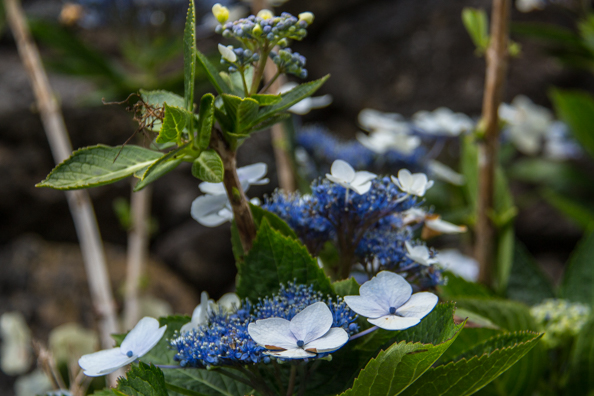
A local restaurant, Cavalo Branco, in the village of Santa Barbara was our venue for lunch. Our meal included some traditional starters served with fresh bread. The pork pate was delicious and I could have made a meal of this with a glass of chilled white wine. I was discovering that the wines of the islands are very light and refreshing. After I had eaten I went for a walk around the village. I found a beautiful church – built in the traditional black and white – and what appeared to the remains of a defensive tower on the cliff top. I later learned that my tower was actually an old flour mill. I had noticed a lot of abandoned industrial buildings on our tour and learned that the island now has only three major industries, tourism, agriculture and fishing.
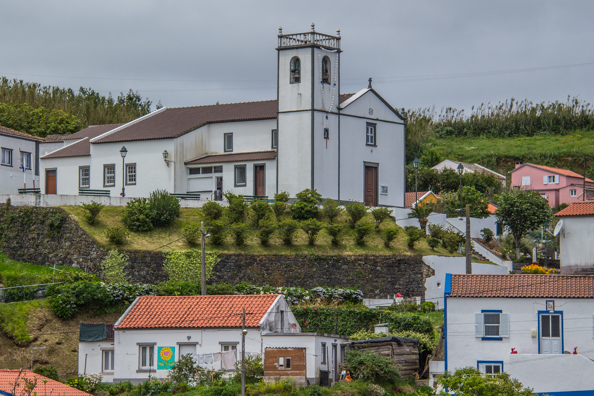
The picturesque small, but rich town of Ribeira Grande stands proudly on a volcanic plateau above the sea. I strolled over an eighteenth century bridge with eight arches. From the bridge I could see the beautiful municipal gardens. I loved the New Zealand Christmas trees that were just coming into bloom. The brilliant red streaks of its red flowers look just like the decorations on a Christmas tree. Beyond the gardens is the Town Hall, its wide frontage the backcloth to two impressive flights of steps that access the main entrance on the first floor. On the other side of the square is the parish church of Espírito Santo. It’s incredible Baroque façade was built during the seventeenth century. The narrow streets that radiate from this square are lined with architecturally interesting buildings. One of these streets leads to the Nossa Senhora da Estelha church accessed by a wide flight of steps.
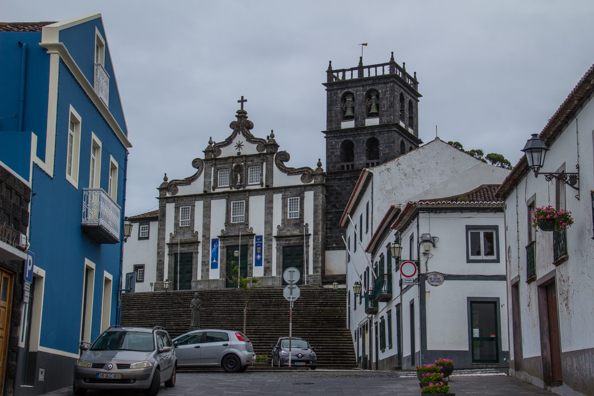
It was very pleasant walking through the natural rainforest park Caldeira Velha. Summer had come and the sky was blue. The water gushing down the cascades in the rock promontories sparkled in the sun. This park is famous for its natural hot springs and pools of brown water were filled with visitors taking advantage of their warmth and healing properties. The vegetation was dense and lush and I would have loved to follow one of the trails through the forest. But we had one more view point to visit.
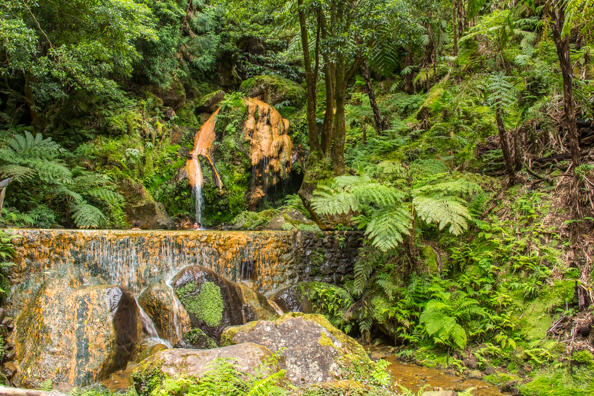
Miradouro da Serra Barrosa is one of the high points of the island. The view from here of Lagoa do Fogo is one of the highlights. I could just make out one of the few genuine white sandy beaches in the Azores fringing a wooded peninsula protruding into the water. A steady stream of walkers threaded their way through the sightseers. São Miguel is very popular with walkers who can follow well-designed paths threading their way through the volcanic landscape.
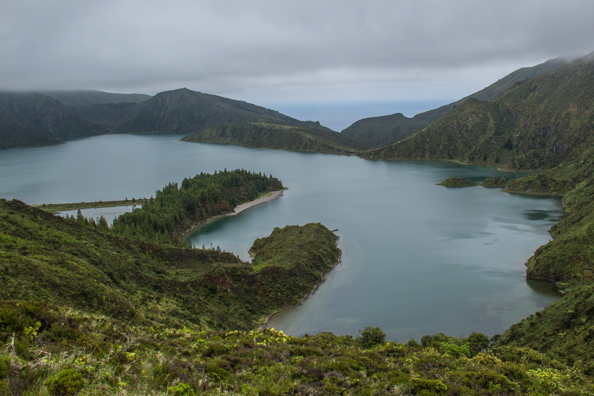
On our way back towards Ponta Delgada Carlos introduced us to the pineapple industry on the island. Now I was going to find out more about this relatively new industry during a visit to the A. Arruda Pineapple Plantation. Historically the fertility of its soil and its geographic position at the cross-roads of Europe, Africa and America contributed to rapid economic growth of São Miguel. The island accrued serious wealth through the export of oranges to England. But in the mid-nineteenth century its orange groves were destroyed by a blight. However, the islanders’ capacity for enterprise meant it was not long before new crops were being grown. The development of contacts with Brazil led to the introduction of pineapples to the island. This fruit prospered in the fertile soil but did not respond well to the changeable climate. Today pineapples are grown in greenhouses – the only place in the world where this fruit is grown under glass. It takes two years for the plants to develop mature fruit and during this process small bonfires are lit in the greenhouses to stimulate growth and discourage pests (no pesticides are used). The result is a delicious, intensely flavoured fruit and a whole industry of pineapple based products including a liquor, chutneys and jams. During my visit to the pineapple plantation I went inside the greenhouses containing the nearly mature plants and sampled a pineapple liquor and some pineapple chutney in the souvenir shop.
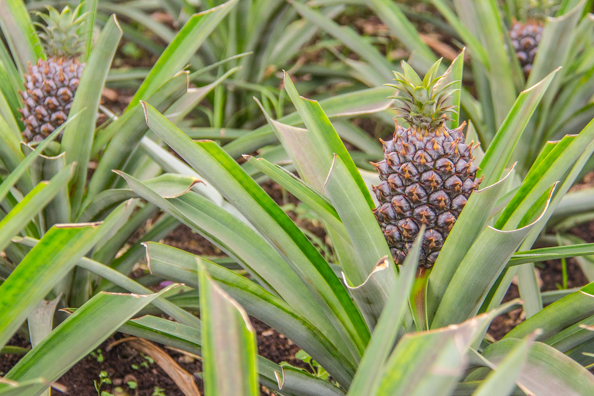
When I emerged from the warmth of the souvenir shop a cold wind was whipping around the corners and dark clouds had gathered above us. Winter had arrived. I hastened to take refuge in the warm interior of our bus for the short journey back to our hotel, Hotel Villa Nova, in Ponta Delgada.
***********************************************************************
Getting there
I spent a week in the Azores on a trip organised by Solos Holidays. We travelled there on direct flights with Azores Airlines. We stayed on the islands of São Miguel and Faial We also spent a day touring the island of Pico.